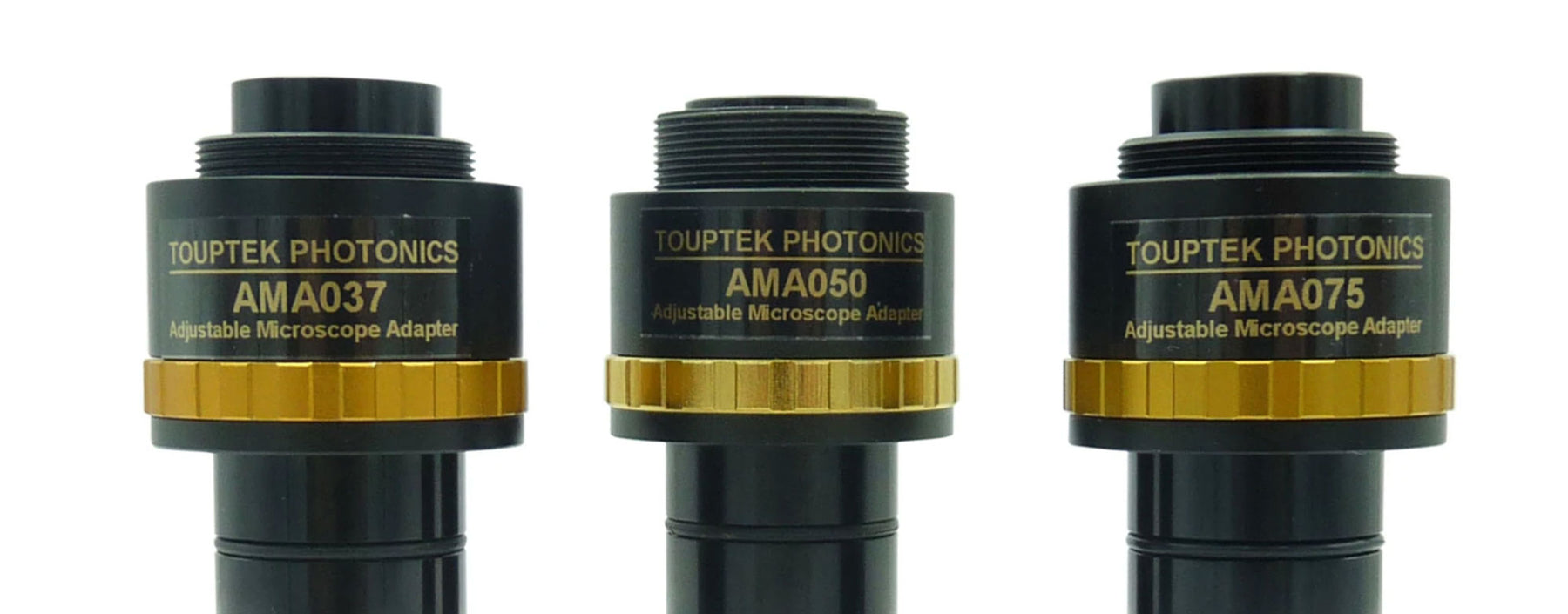
Matching a Microscope C-mount adapter to camera sensor size
If you’re interested in attaching a camera to your trinocular microscope, you’re going to need a suitable C-mount adapter.
But before you rush out and grab any old adapter, there are 2 important things you should know.
- Adapters can be specific to a brand of microscope.
- Your adapter will determine the field of view of your camera images.
Knowing the first point might save you money; knowing the second might save you money and your sanity.
This article explains the relationship between a C-mount adapter and the size of your camera sensor and provides you with a handy rule of thumb for maximising your field of view.
Compatibility
When you’re looking to buy a C-mount adapter, first check the brand of your microscope.
Each brand (Nikon, Leica, etc.) has its own approach when it comes to attaching an adapter. So, your adapter must be compatible with your specific brand of microscope. Trying to use a Nikon microscope with a Leica-compatible adapter just won’t work – the camera image won’t be in focus when the microscope is in focus.
Make sure your adapter will work with your microscope to avoid any headaches.
Conversely, C-mount adapters are standardised on the camera-side, so you probably won’t run into any compatibility issues with your camera.

Nikon 0.35X C-Mount Camera Adaptor Lens for Sensor Size of 1/1.8"
Microscope vs camera sensor
How do you fit a circle into a rectangle?
It sounds unrelated, but this is the crux of the relationship between your C-mount adapter, your camera and your field of view.
The image from a microscope is a circle, but the sensor in your camera detects an image that is rectangular.
What this means is that if you try to take a photo of the whole circular microscope image, you’ll end up with dark areas in each corner. This effect is known as ‘vignetting’.
If you try to avoid the dark areas by zooming in, you end up cropping out parts of the microscope’s field of view because areas of the circle remain outside the now-smaller rectangular camera view.
It’s like trying to take a photo of the moon – if you want a normal rectangular picture of the entire moon, you’re going to have to deal with the night sky in the corners. If you choose to zoom in to avoid seeing any sky, you’ll miss out on seeing some of the moon.
Because of a quirk of camera sensors where they naturally magnify images (which we go into below), your choice of C-mount adapter will determine how much of your microscope’s field of view you’ll be able to see with your camera.
There’s no inherently bad choice. It just comes down to personal preference. Are you prepared to have dark areas in the edges of your images just so you can see the entire field of view? Or do you prefer to zoom in to avoid dark areas by sacrificing your ability to capture the full field of view?
Generally, people prefer to maximise their camera’s field of view so that the camera image most closely matches the microscope’s image.
You can do this by matching the size of your camera’s image sensor to an adapter whose de-magnification best compensates for the natural magnification of the sensor.
Why do you need an adapter?
Your camera sensor naturally magnifies any image it sees. Without any changes, your photos will be magnified and have a narrower field of view than what your microscope is seeing.
Functionally, your camera has built-in zoom.
To combat this, C-mount adapters have de-magnifying lenses inside them to undo the camera’s natural magnification, letting you retain your desired field of view.
The amount of magnification caused by your camera depends on the size of its image sensor, so you need to tailor the level of de-magnification you want in your adapter to your camera’s sensor size.
How to match your camera with the right adapter
Now that you know why you’re doing it, you need to know how to match your camera to the right adapter.
All C-mount adapters have a number on the side – most commonly 1x, 0.65x, 0.5x and 0.35x. These are the level of de-magnification they apply to the image.
Microscope camera sensors tend to be measured in inches – 1”, 2/3”, 1/2” and 1/3”.
The general rule to best maintain field of view parity between your microscope and your camera is to take the sensor size (or chip size) in inches and match it to its closest equivalent value as a decimal.

ToupTek Eyepiece Tube C-Mount Adapter for 23mm Trinocular Port
For example:
- 1” uses a 1x adapter (1 = 1).
- 2/3” would use a 0.65x adapter (2/3 = 0.66)
- 1/2” would use a 0.5x adapter (1/2 = 0.5).
- 1/3” would use a 0.3x adapter (1/3 = 0.33).
(This rule assumes you’re using 10x eyepiece lenses. For higher magnification eyepieces, you’ll need to use C-mount adapters with a higher level of de-magnification.)
Good luck with your adapter hunt!
